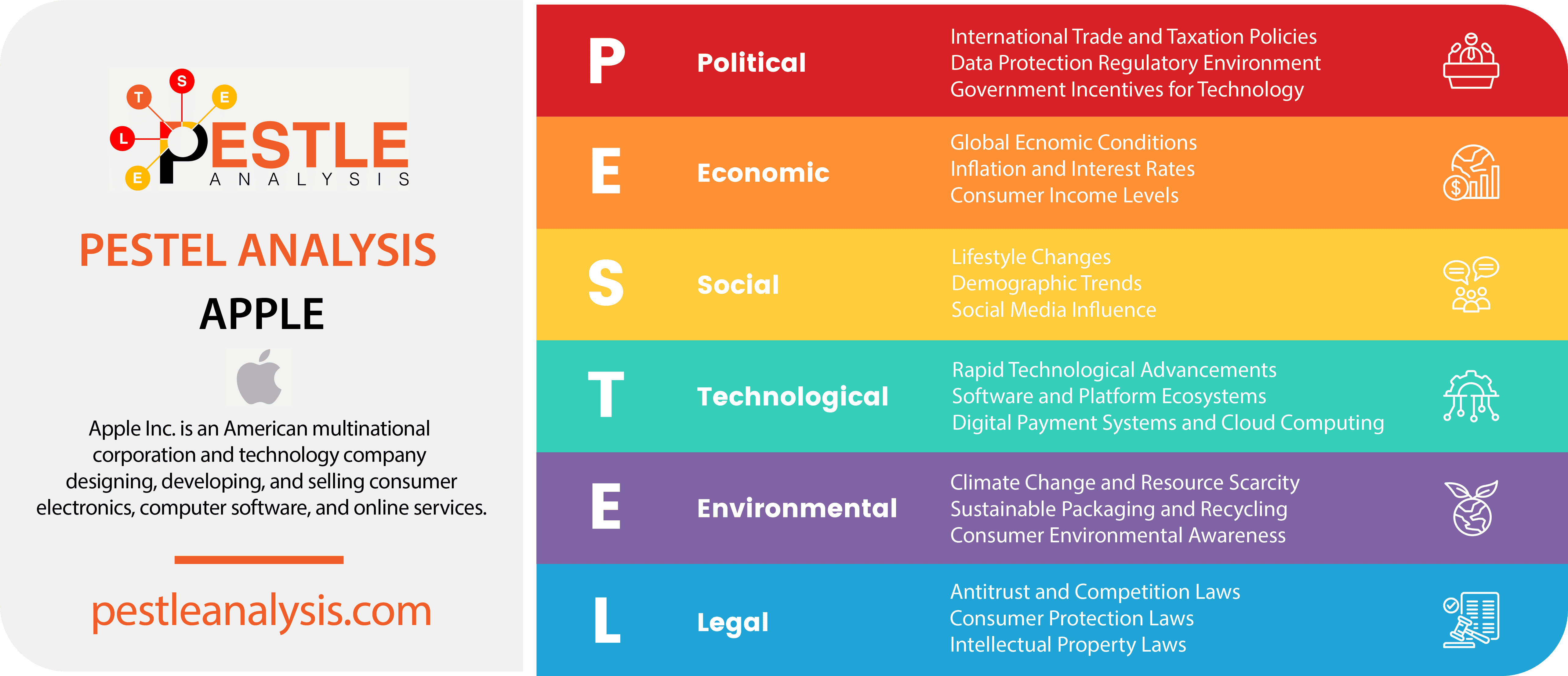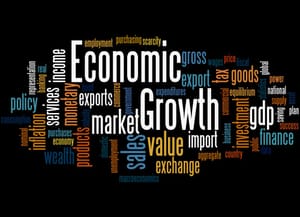Economic factors affecting business include inflation, exchange and interest rates, taxes and unemployment and they are examined in PESTLE analysis.
What are economic factors in PESTLE analysis, how can they affect a business, and what’s a thorough list of economic factors, explaining each one with examples? That’s what I’m discussing here today at PESTLEanalysis, since economic factors are a key component in quite a few types of analysis in business other than PESTLE analysis. In the next 8 minutes, you’ll know everything you need to know about economic factors. Let’s begin.
What are Economic Factors in Business?
Economic factors affecting businesses and organizations are external factors that have everything to do with the economy. These include changes in the economy worldwide, economic shifts in countries, and financial trends and regulations in industries. Think of inflation, taxes, interest rates, consumer spending, monetary policies, and economic growth, to name a few. We'll examine these factors more thoroughly with examples below, with the definition of economic factors out of the way.
The question now is: Why are economic factors important? To answer that, we have to introduce an analysis called PESTLE.
What is a PESTLE Analysis?
PESTLE analysis is the best framework used by business and project managers to assess Political, Economic, Social, Technological, Legal, and Environmental factors that affect a company or an entire industry. It’s better explained with examples like we did here.
Here is a sample of a PESTLE analysis we did on Apple. Notice that economic factors in PESTLE analysis appear second on the PESTLE template.

Economic factors are present in other types of analysis, such as:
Why studying economic factors is important in business and life
Using the analyses above, business managers can explore a business's external environment and how external factors outside their control can impact business operations and future planning.
But even on a personal level, knowing these factors and how the can affect us is also crucial. Whenever I think about the future, especially in terms of career choices or financial planning, I realize how important it is to understand the world around me. That's where the PESTLE analysis comes into play, especially when we combine it with a SWOT analysis for ourselves.
Economic Factors Affecting Business

Incorporating economic factors into a PESTLE analysis involves examining various elements that can influence the market environment, affecting both individuals and organizations. Here are 15 economic factors to consider in your analysis:
- Gross Domestic Product (GDP): An overall measure of a country's economic output and health, indicating the size and health of its economy.
- Inflation Rate: The rate at which the general level of prices for goods and services rises, and, subsequently, purchasing power falls.
- Unemployment Rate: The percentage of the labor force that is jobless and actively seeking employment, reflecting the health of an economy.
- Interest Rates: The cost of borrowing money, influencing consumer spending and business investments.
- Exchange Rates: The value of one currency for the purpose of conversion to another, affecting international trade and investments.
- Consumer Confidence Index: A measure of consumers' optimism on the state of the economy, which can predict spending and saving behaviors.
- Business Confidence Index: Similar to consumer confidence, this indicates the outlook of businesses, affecting their investment and hiring plans.
- Government Fiscal Policy: Government policies on taxation and spending that can stimulate or cool down the economy.
- Monetary Policy: Central bank policies that control the money supply and interest rates, aiming to manage economic growth and inflation.
- External Trade Policies: Tariffs, trade agreements, and regulations that affect a country's trade dynamics with other nations.
- Economic Growth Trends: The direction and pace of economic growth, indicating the expansion or contraction of the economy over time.
- Debt Levels: National and consumer debt levels, which can influence economic stability and interest rates.
- Income Distribution: The spread of wealth among a population, affecting market demand and social stability.
- Commodity Prices: Prices of essential goods such as oil, gold, and agricultural products, which can impact inflation and cost of living.
Understanding these factors within the PESTLE framework provides a comprehensive view of the economic environment, a key advantage provided by PESTLE analysis, which is essential for strategic planning and decision-making.
For instance, when the economy is doing well and jobs are plentiful, people tend to spend more because they feel confident about their financial future.
On the other hand, if inflation is high, the same amount of money buys less, which might make me think twice before buying those expensive sneakers I've been eyeing.
Knowing that interest rates are low might encourage me to save more or invest in certain areas. Similarly, if I'm aware of potential economic downturns, I might be more cautious with my spending and focus on saving for the future.
Understanding these economic factors is crucial because they help us predict trends and make informed decisions, both on a professional and personal level.
Economic Factors Examples in Business
Another great way to learn about how economic factors affect business is to look at PEST analyses, which include them. For example:
Economic Factors Affecting Anthropologie
- Anthropologie targets a wealthy market, so they can afford to take a unique pricing approach which is tailored to that specific economy
- The rise in global development and the worldwide increase in GDP (Gross Domestic Product) means that their target market is gradually growing
- On the other hand, this global development might increase labor and material costs in Less Economically Developed Countries where their products are manufactured (meaning lower profits)
You can find an entire PESTLE analysis of Anthropologie here.
Economic Factors Affecting The United Kingdom
- The UK boasts one of the highest GDPs in the world, trailing behind only Germany in Europe.
- The United Kingdom has a constantly increasing amount of Foreign Direct Investment.
- The area is still feeling the effects of the 2008/2009 economic recession and the Brexit economic setback.
A full PEST analysis of the UK is available here.
Of course, here at PESTLEanalysis.com we have an abundance of this kind of analysis for many businesses, countries and industries. Start from these examples and you'll be an expert in PESTLE analysis in no time!
How to Find Economic Factors Affecting Businesses

How do you find economic factors that affect businesses, organizations, or industries? By staying informed and adaptable while keeping an eye on economic trends.
- Stay Curious and Informed
First and foremost, curiosity is your best ally. The world of economics is dynamic, with constant shifts and changes.
Regularly reading news articles and following reputable financial news outlets can make complex economic terms and trends a lot easier to understand.
- Leverage Educational Resources
There's a wealth of online courses and resources available that cover economic principles and how they apply to real-world scenarios. Platforms like Coursera, Khan Academy, and even YouTube have courses and educational videos ranging from beginner to advanced.
Investing time in these resources has helped me grasp the broader economic factors at play. More importantly they helped me understand how they might impact an organization, which is the goal of PESTLE analysis.
- Engage in Conversations
Talking about economic trends and theories with other students, colleagues, or mentors can offer new perspectives and insights. I've found that discussions can clarify doubts and stimulate interest in topics I might not have explored on my own.
Hearing how economic factors impact others provides a more tangible connection to what might seem like abstract concepts.
Other external factors affecting business
Remember though. PESTLE analysis involves 5 more external factors. Make sure you know about them as well, before conducting one:

